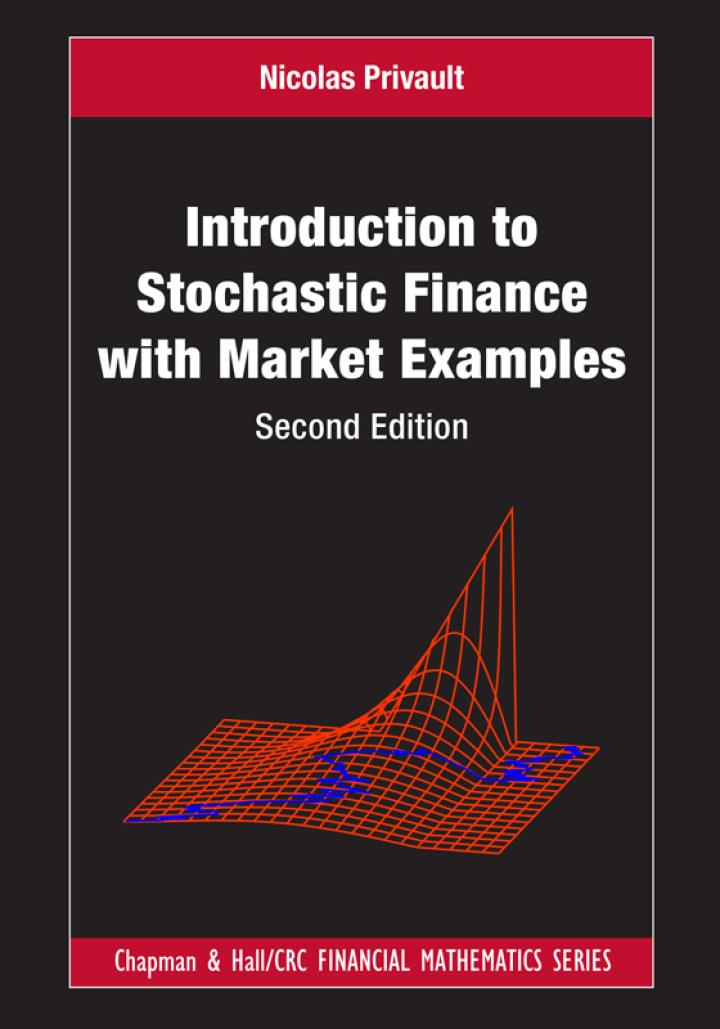Stop-loss/start-gain strategy (Lipton (2001) 8.3.3. Let (left(B_{t}ight)_{t in mathbb{R}_{+}})be a standard Brownian motion started at (B_{0}
Question:
Stop-loss/start-gain strategy (Lipton (2001) § 8.3.3. Let \(\left(B_{t}ight)_{t \in \mathbb{R}_{+}}\)be a standard Brownian motion started at \(B_{0} \in \mathbb{R}\).
a) We consider a simplified foreign exchange model, in which the AUD is a risky asset and the AUD/SGD exchange rate at time \(t\) is modeled by \(B_{t}\), i.e. \(\mathrm{AU} \$ 1\) equals \(\mathrm{SG} \$ B_{t}\) at time \(t\). A foreign exchange (FX) European call option gives to its holder the right (but not the obligation) to receive \(\mathrm{AU} \$ 1\) in exchange for \(K=\mathrm{SG} \$ 1\) at maturity \(T\). Give the option payoff at maturity, quoted in SGD.
In what follows, for simplicity we assume no time value of money \((r=0)\), i.e. the (riskless) SGD account is priced \(A_{t}=A_{0}=1,0 \leqslant t \leqslant T\).
b) Consider the following hedging strategy for the European call option of Question (a):
i) If \(B_{0}>1\), charge the premium \(B_{0}-1\) at time 0 , and borrow SG\$1 to purchase \(\mathrm{AU} \$ 1\).
ii) If \(B_{0}<1\), issue the option for free.
iii) From time 0 to time \(T\), purchase* AU \(\$ 1\) every time \(B_{t}\) crosses \(K=1\) from below, and sell \({ }^{\dagger} \mathrm{AU} \$ 1\) each time \(B_{t}\) crosses \(K=1\) from above.
Show that this strategy effectively hedges the foreign exchange European call option at maturity \(T\).
Hint: Note that it suffices to consider four scenarios based on \(B_{0}<1\) vs \(B_{0}<1\) and \(B_{T}>1\) vs \(B_{T}<1\).
c) Determine the quantities \(\eta_{t}\) of SGD cash and \(\xi_{t}\) of (risky) AUDs to be held in the portfolio and express the portfolio value \[
V_{t}=\eta_{t}+\xi_{t} B_{t}
\]
at all times \(t \in[0, T]\).
d) Compute the integral summation \[
\int_{0}^{t} \eta_{s} d A_{s}+\int_{0}^{t} \xi_{s} d B_{s}
\]
of portfolio profits and losses at any time \(t \in[0, T]\).
e) Is the portfolio strategy \(\left(\eta_{t}, \xi_{t}ight)_{t \in[0, T]}\) self-financing? How to interpret the answer in practice?
Step by Step Answer:

Introduction To Stochastic Finance With Market Examples
ISBN: 9781032288277
2nd Edition
Authors: Nicolas Privault





